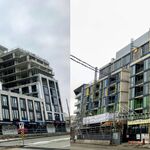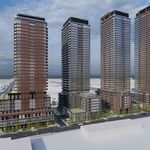ShonTron
Moderator
Member Bio
- Joined
- Apr 24, 2007
- Messages
- 12,585
- Reaction score
- 9,641
- Location
- Ward 13 - Toronto Centre
I wrote at length about the TCH numbering system (or lack of) elsewhere.
The TCH was a 1950s project to complete a high-quality paved route across all ten provinces, with federal funding allocated to completing these links.
In Ontario, Quebec, and the Maritime Provinces, there was already a complete, paved highway. In fact, there was an interprovincial highway with the same number all the way from Windsor, Ontario to Halifax, Nova Scotia – Highway 2. Ontario had just completed a paved highway link to Manitoba as well, but it required going via North Bay and Cochrane on Highway 11 as Highway 17 wasn’t completed yet.
Sections of Highway 1 already existed in BC and the Prairies and were slowly coming together as a single highway. So you had two distinct highway numbers for a through eastern route and a distinct western route, with the enormity of Northern Ontario separating them.
Since the eastern provinces had their highways completed – with Ontario and Quebec focused on building new freeways and Autoroutes – TCH money went towards building new bypasses and new, more direct routes. In New Brunswick, for example, Highway 2 was rerouted away from Saint John to avoid a much more winding alignment. In Ontario, Highway 17 along Lake Superior and Highway 69 along Georgian Bay were completed, with new bypasses built along the TCH branches in places like North Bay, Pembroke, Lindsay, Peterborough, Orillia, Hawkesbury, etc, and the Queensway built through Ottawa.
In the 1960s-1970s, of course, Québec completely renumbered its highways, eliminating Highway 2 there, and in Nova Scotia, a new series of highways mostly superseded its older routes, though those still exist. Mike Harris decimated the highway network here.
Calling for a standardization and nation-wide renumbering system ignores the fact that the federal government has no direct role in highways, with the TCH project being the one major intervention.
But, I wouldn’t mind Ontario using TCH shields on the portions of highways with that designation. Québec would never.
The TCH was a 1950s project to complete a high-quality paved route across all ten provinces, with federal funding allocated to completing these links.
In Ontario, Quebec, and the Maritime Provinces, there was already a complete, paved highway. In fact, there was an interprovincial highway with the same number all the way from Windsor, Ontario to Halifax, Nova Scotia – Highway 2. Ontario had just completed a paved highway link to Manitoba as well, but it required going via North Bay and Cochrane on Highway 11 as Highway 17 wasn’t completed yet.
Sections of Highway 1 already existed in BC and the Prairies and were slowly coming together as a single highway. So you had two distinct highway numbers for a through eastern route and a distinct western route, with the enormity of Northern Ontario separating them.
Since the eastern provinces had their highways completed – with Ontario and Quebec focused on building new freeways and Autoroutes – TCH money went towards building new bypasses and new, more direct routes. In New Brunswick, for example, Highway 2 was rerouted away from Saint John to avoid a much more winding alignment. In Ontario, Highway 17 along Lake Superior and Highway 69 along Georgian Bay were completed, with new bypasses built along the TCH branches in places like North Bay, Pembroke, Lindsay, Peterborough, Orillia, Hawkesbury, etc, and the Queensway built through Ottawa.
In the 1960s-1970s, of course, Québec completely renumbered its highways, eliminating Highway 2 there, and in Nova Scotia, a new series of highways mostly superseded its older routes, though those still exist. Mike Harris decimated the highway network here.
Calling for a standardization and nation-wide renumbering system ignores the fact that the federal government has no direct role in highways, with the TCH project being the one major intervention.
But, I wouldn’t mind Ontario using TCH shields on the portions of highways with that designation. Québec would never.




